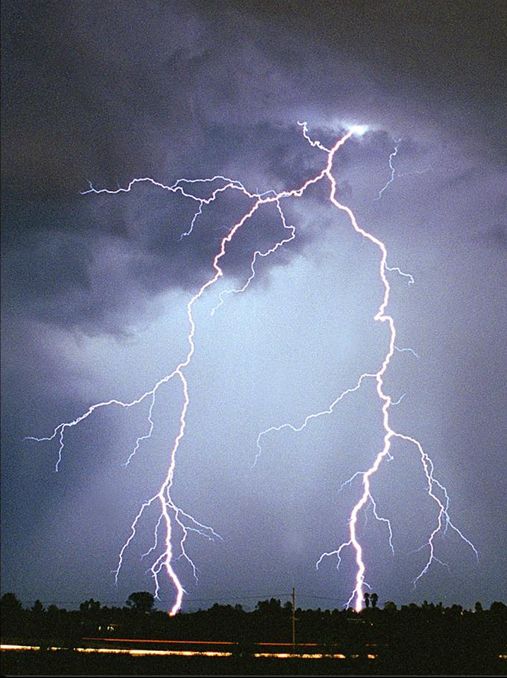Scientists Surprised by X-rays from Lab Lightning

Sparks created in a lab give off X-rays, scientists announced Monday.
X-rays are a byproduct of high-energy electron discharges in the Sun, in exploding stars, and even in lightning. Many scientists did not expect sparks alone to do the trick.
Researchers at Florida Institute of Technology brought their equipment, which had detected X-rays in lightning, into the lab. Half the team expected to see X-rays and the other half did not.
In sparks of 1.5 million to 2 million volts, the researchers indeed recorded X-rays that were remarkably similar to those produced by lightning.
"This amazed us. It opens the door to answering really big questions about lightning by generating it in the lab," said team member Hamid Rassoul. "It also tells us that we have a lot to learn about how even small sparks work."
X-rays are a form of electromagnetic radiation, on a spectrum that runs from radio waves on the low end to gamma rays on the high end and includes visible light, too.
Scientists don't know why lightning spawns X-rays. They theorize it involves a "runaway breakdown" of the air, in which electrons escape their normal bonds and gain very large energies.
Get the world’s most fascinating discoveries delivered straight to your inbox.
"We didn't think [X-rays] could be made so easily in the air," said study leader Joseph Dwyer. "The results should allow for the detailed laboratory study of runaway breakdown, a mechanism that may play a role in thunderstorm electrification, lightning initiation and propagation, and terrestrial gamma-ray flashes."
The discovery is published in the journal Geophysical Research Letters.
- Electric Earth Gallery
- The Science of Lightning
- Earth's Lightning Zaps Space, Too
- First Artificial Neon Sky Show Created
- Don't Become a Lightning Rod
Robert is an independent health and science journalist and writer based in Phoenix, Arizona. He is a former editor-in-chief of Live Science with over 20 years of experience as a reporter and editor. He has worked on websites such as Space.com and Tom's Guide, and is a contributor on Medium, covering how we age and how to optimize the mind and body through time. He has a journalism degree from Humboldt State University in California.

